Samuel Kaski
Department of Computer Science, Aalto University, Department of Computer Science, University of Manchester
Bayesian Inference for Optimal Transport with Stochastic Cost
Oct 19, 2020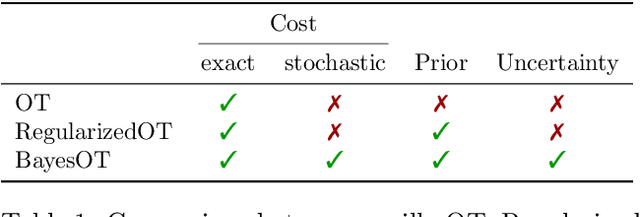

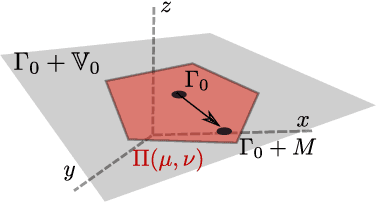

Abstract:In machine learning and computer vision, optimal transport has had significant success in learning generative models and defining metric distances between structured and stochastic data objects, that can be cast as probability measures. The key element of optimal transport is the so called lifting of an \emph{exact} cost (distance) function, defined on the sample space, to a cost (distance) between probability measures over the sample space. However, in many real life applications the cost is \emph{stochastic}: e.g., the unpredictable traffic flow affects the cost of transportation between a factory and an outlet. To take this stochasticity into account, we introduce a Bayesian framework for inferring the optimal transport plan distribution induced by the stochastic cost, allowing for a principled way to include prior information and to model the induced stochasticity on the transport plans. Additionally, we tailor an HMC method to sample from the resulting transport plan posterior distribution.
Privacy-preserving Data Sharing on Vertically Partitioned Data
Oct 19, 2020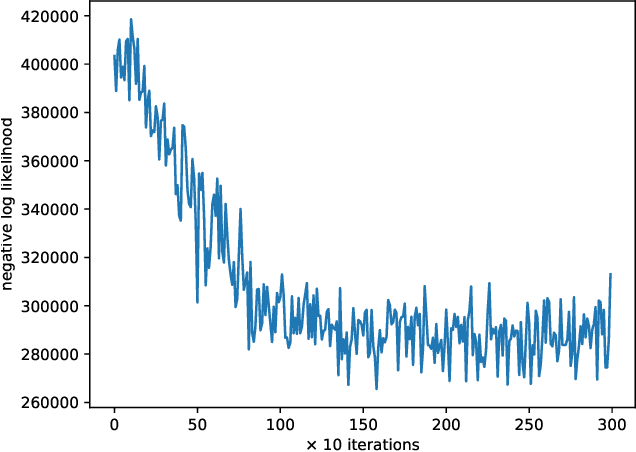
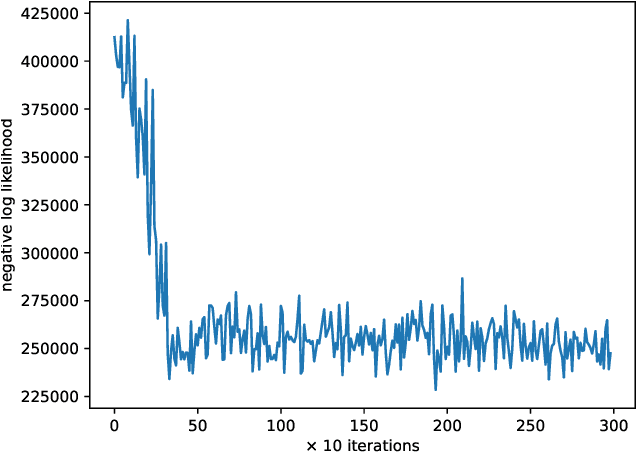
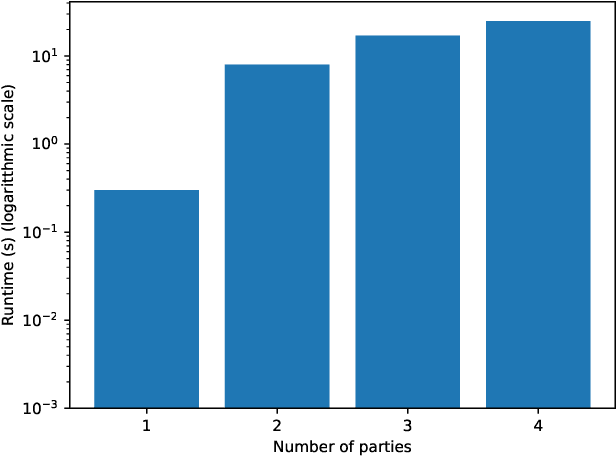
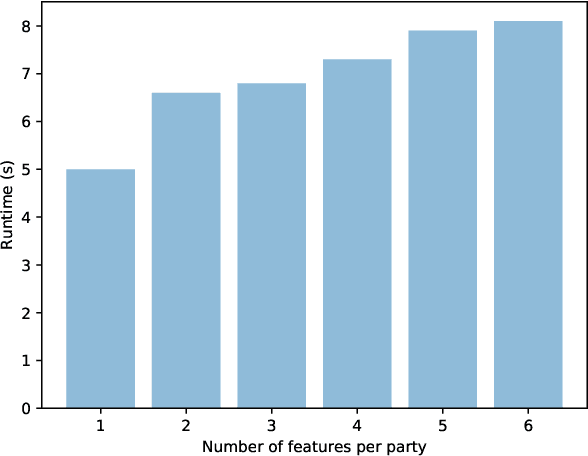
Abstract:In this work, we present a method for differentially private data sharing by training a mixture model on vertically partitioned data, where each party holds different features for the same set of individuals. We use secure multi-party computation (MPC) to combine the contribution of the data from the parties to train the model. We apply the differentially private variational inference (DPVI) for learning the model. Assuming the mixture components contain no dependencies across different parties, the objective function can be factorized into a sum of products of individual components of each party. Therefore, each party can calculate its shares on its own without the use of MPC. Then MPC is only needed to get the product between the different shares and add the noise. Applying the method to demographic data from the US Census, we obtain comparable accuracy to the non-partitioned case with approximately 20-fold increase in computing time.
Teaching to Learn: Sequential Teaching of Agents with Inner States
Sep 14, 2020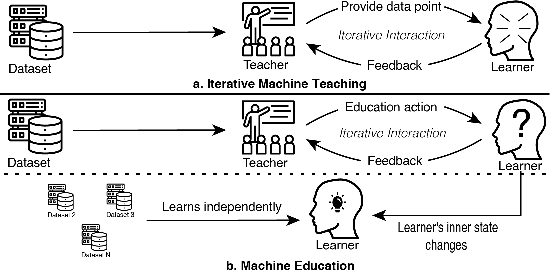
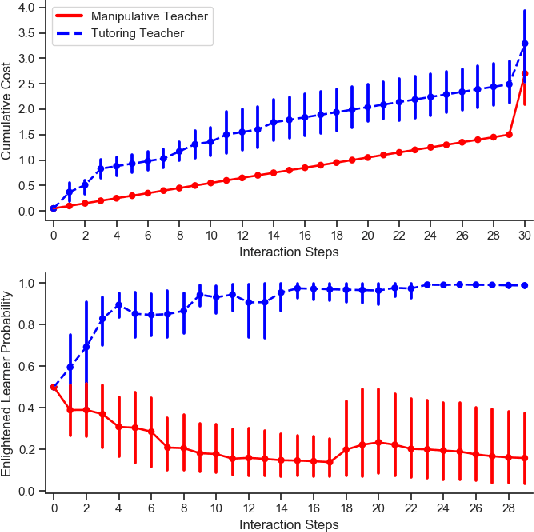
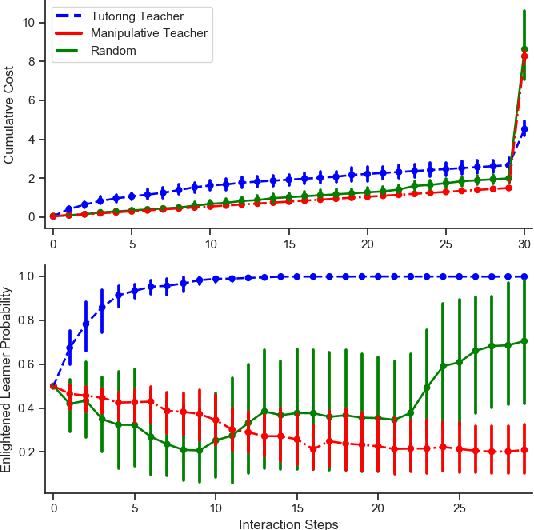

Abstract:In sequential machine teaching, a teacher's objective is to provide the optimal sequence of inputs to sequential learners in order to guide them towards the best model. In this paper we extend this setting from current static one-data-set analyses to learners which change their learning algorithm or latent state to improve during learning, and to generalize to new datasets. We introduce a multi-agent formulation in which learners' inner state may change with the teaching interaction, which affects the learning performance in future tasks. In order to teach such learners, we propose an optimal control approach that takes the future performance of the learner after teaching into account. This provides tools for modelling learners having inner states, and machine teaching of meta-learning algorithms. Furthermore, we distinguish manipulative teaching, which can be done by effectively hiding data and also used for indoctrination, from more general education which aims to help the learner become better at generalization and learning in new datasets in the absence of a teacher.
Differentially private cross-silo federated learning
Jul 10, 2020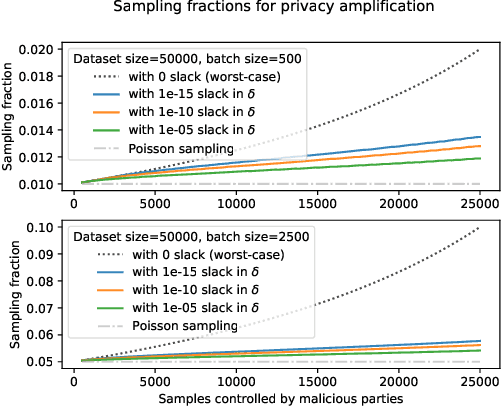
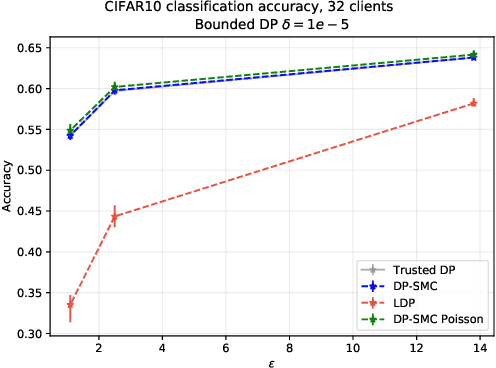
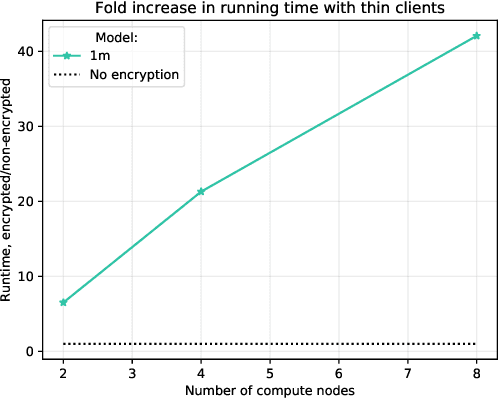
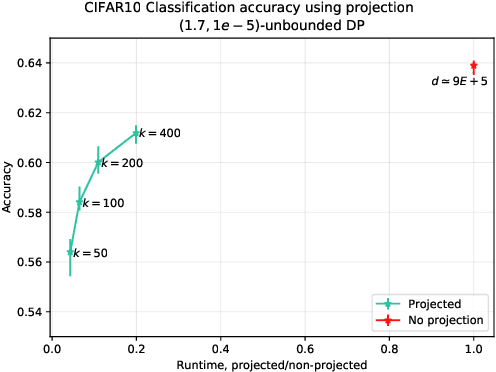
Abstract:Strict privacy is of paramount importance in distributed machine learning. Federated learning, with the main idea of communicating only what is needed for learning, has been recently introduced as a general approach for distributed learning to enhance learning and improve security. However, federated learning by itself does not guarantee any privacy for data subjects. To quantify and control how much privacy is compromised in the worst-case, we can use differential privacy. In this paper we combine additively homomorphic secure summation protocols with differential privacy in the so-called cross-silo federated learning setting. The goal is to learn complex models like neural networks while guaranteeing strict privacy for the individual data subjects. We demonstrate that our proposed solutions give prediction accuracy that is comparable to the non-distributed setting, and are fast enough to enable learning models with millions of parameters in a reasonable time. To enable learning under strict privacy guarantees that need privacy amplification by subsampling, we present a general algorithm for oblivious distributed subsampling. However, we also argue that when malicious parties are present, a simple approach using distributed Poisson subsampling gives better privacy. Finally, we show that by leveraging random projections we can further scale-up our approach to larger models while suffering only a modest performance loss.
Likelihood-Free Inference with Deep Gaussian Processes
Jun 18, 2020
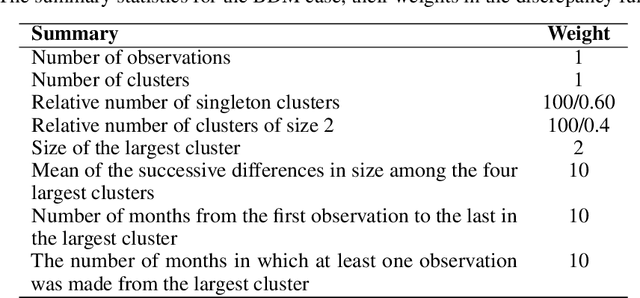

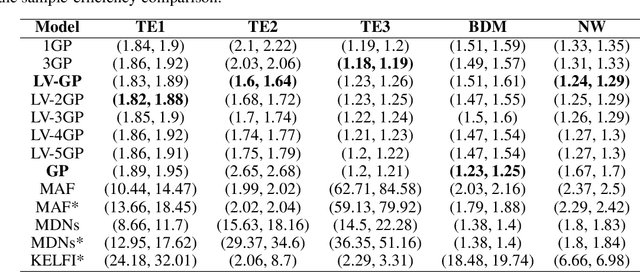
Abstract:In recent years, surrogate models have been successfully used in likelihood-free inference to decrease the number of simulator evaluations. The current state-of-the-art performance for this task has been achieved by Bayesian Optimization with Gaussian Processes (GPs). While this combination works well for unimodal target distributions, it is restricting the flexibility and applicability of Bayesian Optimization for accelerating likelihood-free inference more generally. We address this problem by proposing a Deep Gaussian Process (DGP) surrogate model that can handle more irregularly behaved target distributions. Our experiments show how DGPs can outperform GPs on objective functions with multimodal distributions and maintain a comparable performance in unimodal cases. This confirms that DGPs as surrogate models can extend the applicability of Bayesian Optimization for likelihood-free inference (BOLFI), while adding computational overhead that remains negligible for computationally intensive simulators.
Human Strategic Steering Improves Performance of Interactive Optimization
May 04, 2020
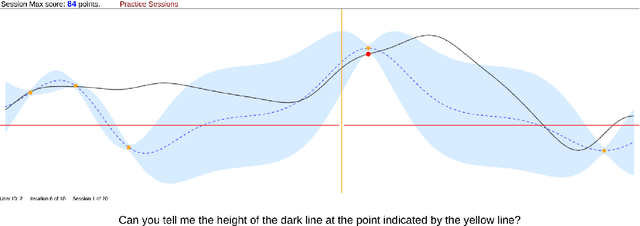
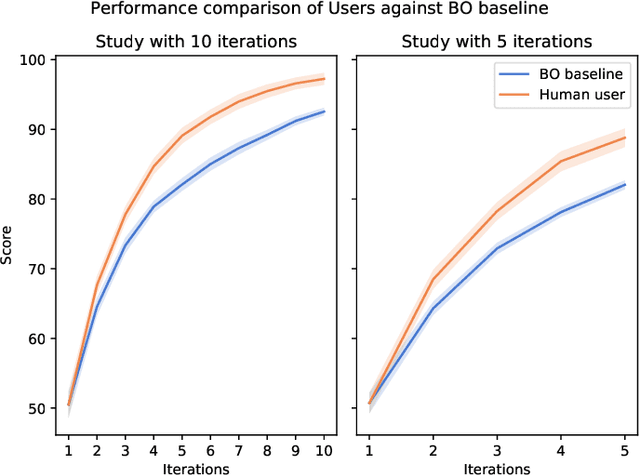
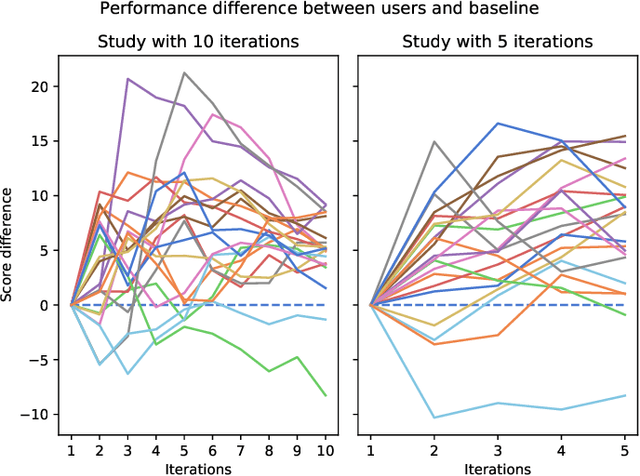
Abstract:A central concern in an interactive intelligent system is optimization of its actions, to be maximally helpful to its human user. In recommender systems for instance, the action is to choose what to recommend, and the optimization task is to recommend items the user prefers. The optimization is done based on earlier user's feedback (e.g. "likes" and "dislikes"), and the algorithms assume the feedback to be faithful. That is, when the user clicks "like," they actually prefer the item. We argue that this fundamental assumption can be extensively violated by human users, who are not passive feedback sources. Instead, they are in control, actively steering the system towards their goal. To verify this hypothesis, that humans steer and are able to improve performance by steering, we designed a function optimization task where a human and an optimization algorithm collaborate to find the maximum of a 1-dimensional function. At each iteration, the optimization algorithm queries the user for the value of a hidden function $f$ at a point $x$, and the user, who sees the hidden function, provides an answer about $f(x)$. Our study on 21 participants shows that users who understand how the optimization works, strategically provide biased answers (answers not equal to $f(x)$), which results in the algorithm finding the optimum significantly faster. Our work highlights that next-generation intelligent systems will need user models capable of helping users who steer systems to pursue their goals.
Variance reduction for distributed stochastic gradient MCMC
Apr 23, 2020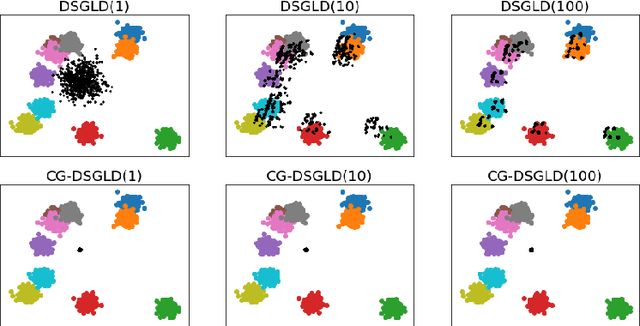
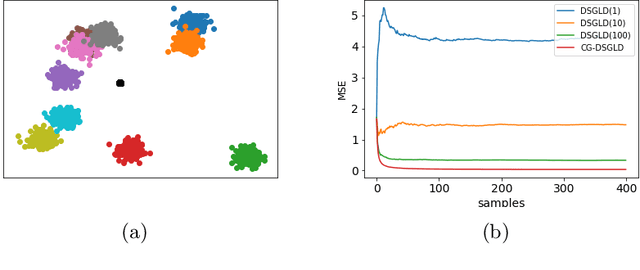
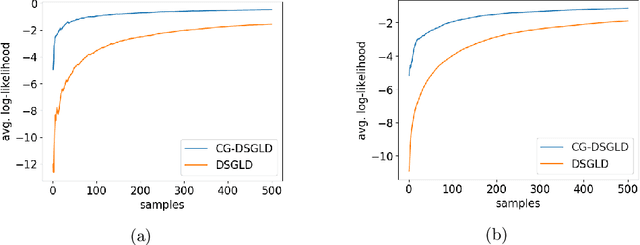
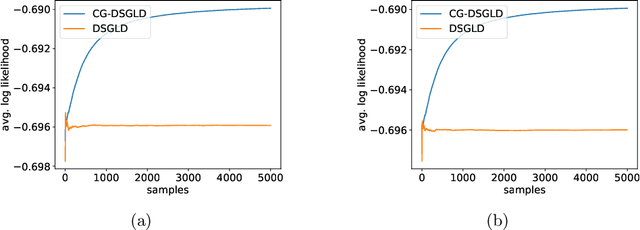
Abstract:Stochastic gradient MCMC methods, such as stochastic gradient Langevin dynamics (SGLD), have emerged as one of the dominant approaches for posterior sampling in large-scale settings. While gradient evaluations based on only a small fraction of the data significantly reduce the computational cost, they may suffer from high variance, leading to slow convergence. In distributed settings, where the data lie scattered across a number of workers, the problem of high variance is particularly imminent and is even worse if the data subsets held by the workers are very heterogeneous. The impact of variance reduction has been studied in serial settings but not in distributed scenarios so far. In this work, we derive variance bounds for distributed SGLD and introduce the concept of conducive gradients, zero-mean stochastic gradients that serve as a mechanism for sharing probabilistic information between workers. We introduce a novel stochastic gradient estimator which incorporates the inducive gradients, and show both theoretically and empirically that it reduces variance, and hence improves convergence.
A High-Performance Implementation of Bayesian Matrix Factorization with Limited Communication
Apr 14, 2020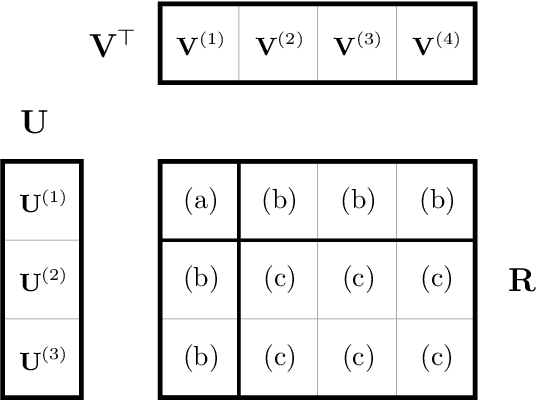
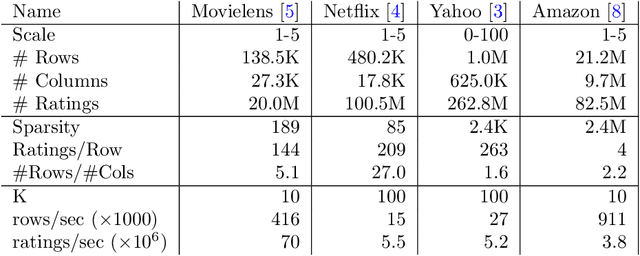
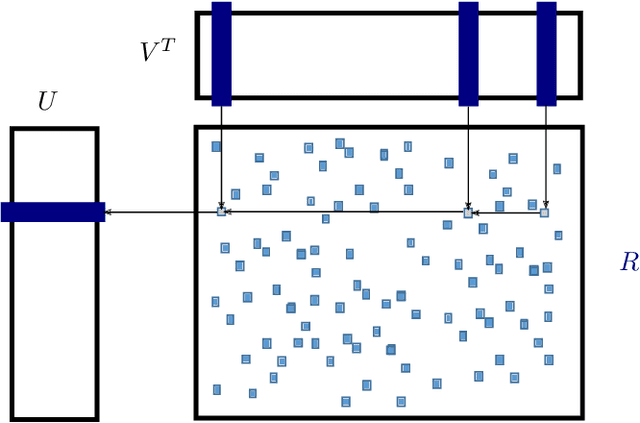

Abstract:Matrix factorization is a very common machine learning technique in recommender systems. Bayesian Matrix Factorization (BMF) algorithms would be attractive because of their ability to quantify uncertainty in their predictions and avoid over-fitting, combined with high prediction accuracy. However, they have not been widely used on large-scale data because of their prohibitive computational cost. In recent work, efforts have been made to reduce the cost, both by improving the scalability of the BMF algorithm as well as its implementation, but so far mainly separately. In this paper we show that the state-of-the-art of both approaches to scalability can be combined. We combine the recent highly-scalable Posterior Propagation algorithm for BMF, which parallelizes computation of blocks of the matrix, with a distributed BMF implementation that users asynchronous communication within each block. We show that the combination of the two methods gives substantial improvements in the scalability of BMF on web-scale datasets, when the goal is to reduce the wall-clock time.
Correlated Feature Selection with Extended Exclusive Group Lasso
Feb 27, 2020

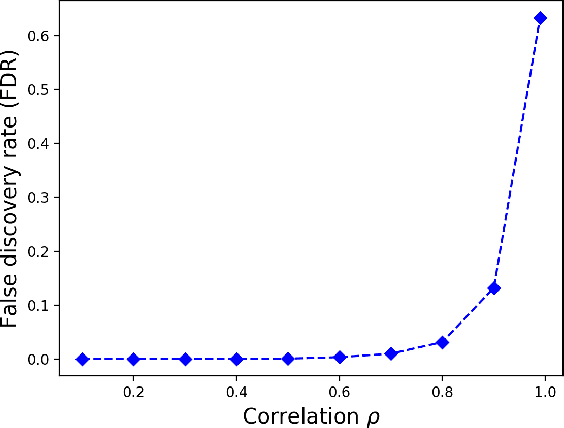

Abstract:In many high dimensional classification or regression problems set in a biological context, the complete identification of the set of informative features is often as important as predictive accuracy, since this can provide mechanistic insight and conceptual understanding. Lasso and related algorithms have been widely used since their sparse solutions naturally identify a set of informative features. However, Lasso performs erratically when features are correlated. This limits the use of such algorithms in biological problems, where features such as genes often work together in pathways, leading to sets of highly correlated features. In this paper, we examine the performance of a Lasso derivative, the exclusive group Lasso, in this setting. We propose fast algorithms to solve the exclusive group Lasso, and introduce a solution to the case when the underlying group structure is unknown. The solution combines stability selection with random group allocation and introduction of artificial features. Experiments with both synthetic and real-world data highlight the advantages of this proposed methodology over Lasso in comprehensive selection of informative features.
Informative Gaussian Scale Mixture Priors for Bayesian Neural Networks
Feb 24, 2020

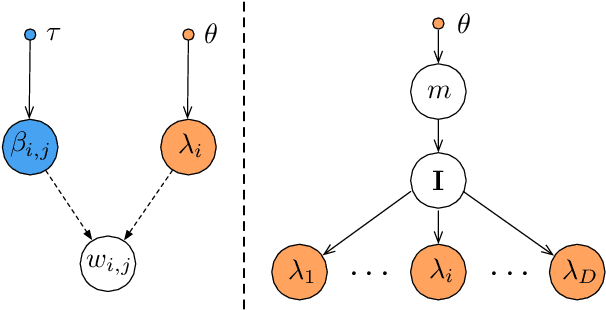

Abstract:Encoding domain knowledge into the prior over the high-dimensional weight space is challenging in Bayesian neural networks. Two types of domain knowledge are commonly available in scientific applications: 1. feature sparsity (number of relevant features); 2. signal-to-noise ratio, quantified, for instance, as the proportion of variance explained (PVE). We show both types of domain knowledge can be encoded into the widely used Gaussian scale mixture priors with Automatic Relevance Determination. Specifically, we propose a new joint prior over the local (i.e., feature-specific) scale parameters to encode the knowledge about feature sparsity, and an algorithm to determine the global scale parameter (shared by all features) according to the PVE. Empirically, we show that the proposed informative prior improves prediction accuracy on publicly available datasets and in a genetics application.
 Add to Chrome
Add to Chrome Add to Firefox
Add to Firefox Add to Edge
Add to Edge